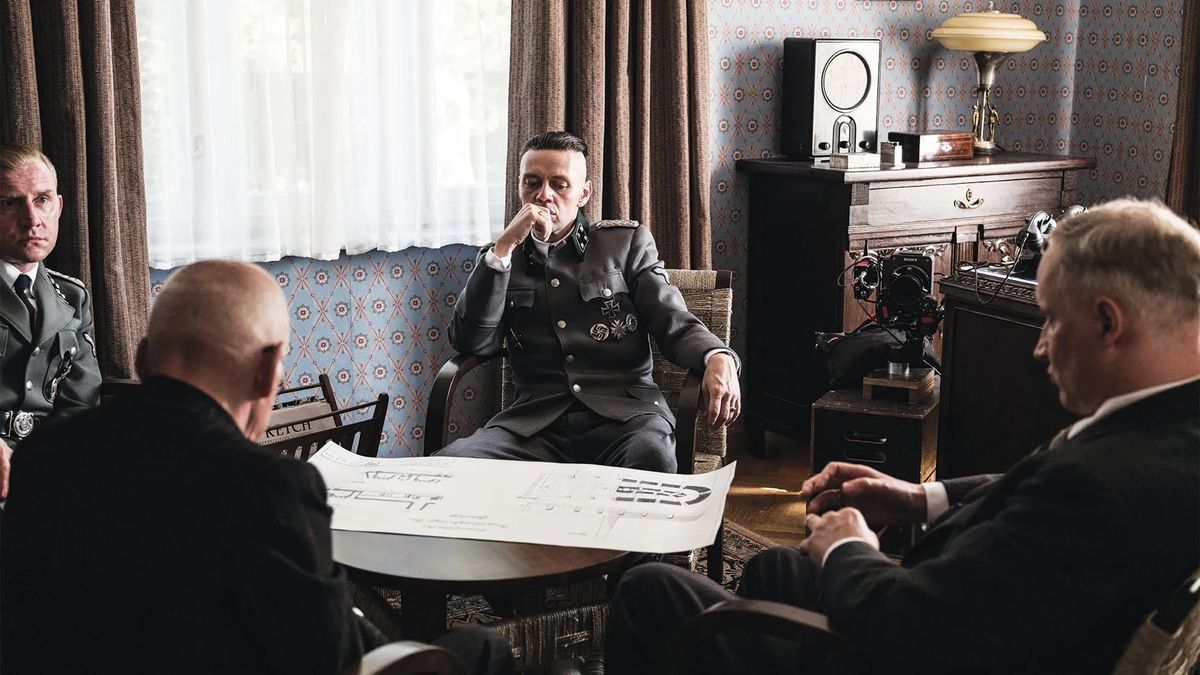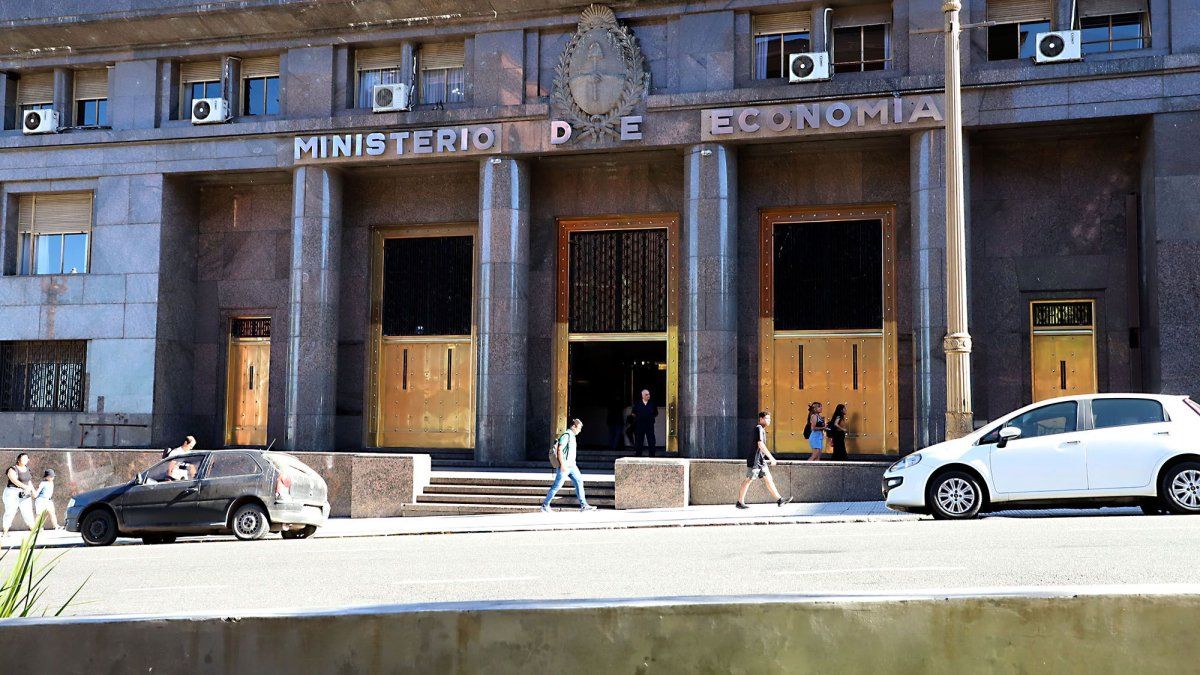What happened to the family Rudolf Höss, the commandant of Auschwitzwhere approximately three million prisoners died? The film “Zone of interest” tells how well that family lived, right next to the largest concentration camp of the Nazi empire. Later, he ended up hanging from the gallows, in that same place where he previously reigned. And the family? And the children of so many other Nazi leaders? Believe it or not, Höss’s eldest daughter became a high-fashion model, married an American, and ended up as a trusted employee of a fine Jewish-owned clothing store in Washington. She once crossed paths with Verushka, the famous model who as a child had also lived in Auschwitz, but on the inside.
At the fall of Nazism, Rudolf Höss hid his people in one farm and he hid in another, under a false name. But the English located the family and began to beat the eldest son, until her desperate mother ended up revealing her husband’s hiding place.. When they surrounded him, he said his name was Franz Lang, a simple peasant, until they took his engagement ring. There he clearly said “Rudolf und Hedwig”. Already imprisoned, he managed to write his memoirs while being interrogated by a Polish-Jewish prosecutor.
There is of this an Israeli film with Romanus Furhmann, “The Interrogation”, and from the memoirs (recently republished in Spanish, with a prologue by one of his most famous victims, the writer Primo Levi) emerged Robert Merle’s novel “La mort es mon métier “, my job is death. In 1977 the Germans adapted it for the cinema as “Aus einem deutschen Leben”, a German life, with Gotz George, until then an action and adventure heartthrob. Significantly, the character there is not called Höss, but Franz Lang.
That film, which was opportunely released by the Goethe Institute, dedicates a few scenes to the executioner’s family life: the elegant wife giving instructions to the butler who arranges the vases, a daughter with a big Star of David on her dress, because they are playing Nazis, and Jews, and a dialogue where the woman finally understands that the husband would even be capable of killing his own children, if a superior ordered him to do so.
Klaus (1930), Heidetraut (1932), Brigitt (1933), Hans-Jurgen (1937) and Annegret (1943), the children were called. In a shocking book, “Children of Nazis,” historian Tania Crasnianski investigates how they lived their childhood and how they rebuilt their lives. the offspring of some famous hierarchs. There were those who affirmed Nazism, like Gudrun Himmler (rejected by her daughter Katryn, who wrote “The Brothers Himmler”), or insisted on the innocence of their parents, like Edda Göring (“Dad was not a fanatic. You could read the peace in his eyes)or they scoured heaven and earth to confront them, as Rolf Mengele, who after 21 years was able to find the famous Angel of Death. They met only once and argued without understanding each other.
Others lived disturbed like Niklas Frank, son of the Butcher of Krakow. “I hate that bastard who burns in hell and haunts me,” he said., and added “Since I was a child, I was convinced that I belonged to a family of criminals.” She is partly right: his mother profited from furs bought at a very low price in the ghetto, and his older sister was, years later, a great propagandist for South African apartheid.
Others took a long time to realize, such as Monika Goeth, who only when he saw “Schindler’s List” began to consider that his father had not exactly been a war hero. On the other hand, Goebbels’ six children had no chance to say anything. His parents themselves killed them along with themselves, when the fall of the regime was already evident.
And the Hösses? With names changed, they became lost in anonymity. Only one, now 80 years old, confessed her name and memories of her: Brigitt, from his home in North Virginia. Paradoxically, they were beautiful memories, because “the father was very good with his children, he played with them, he read them stories, he was quite patient with them, he brought gifts,” and he never let them know what was happening outside their happy and innocent circle. It is like this, there are bestial murderers who, with their own, within the home, are charming people.
Brigitt had a comfortable childhood in successive military neighborhoods next to the Dachau, Sachsenhausen and Auschwitz camps. Then, of course, she had an adolescence of deprivation and hiding during the postwar period, but she soon became a beautiful and thin young woman, so she settled in Spain, where there were a few Nazi refugees, and became a haute couture model. from the Balenciaga house.
He once crossed paths with another German model, six years younger, Verushka, born Vera G. von Lehndorff. She had also known the fields in her early childhood, but from the inside, with her mother and her sisters.. They were not Jewish, but his father, a Prussian aristocrat opposed to the Nazis, participated in the failed plot to kill Hitler, for which he was sentenced to death, his property confiscated, and his entire family punished.
In the mid ’60s Brigitt married an American businessman with whom she traveled half the world and settled in the United States, renamed Bridget.. Then came two more husbands, children, grandchildren, and a 35-year job at the prestigious Saks Jandel haute couture house in Washington, closed in 2016.
The wives of the most eminent politicians dressed there, as did Liz Taylor, with models from Dior, Yves Laurent and other brands of similar renown. The owner’s name was Ernst Marx, a Berlin Jew. At some point she confessed to him where she came from. The answer was noble: the children are not to blame. And he kept her in the position, which was of hierarchy (her parents gave another kind of response in the interrogations: “I was only following orders”, “I didn’t know anything”).
Brigitt’s past was kept in the utmost discretion, until Thomas Harding, the English researcher who was writing a new book, appeared in 2013: “Hanns and Rudolf”, about his great-uncle Hanns Alexander, the rich Jew who escaped in time with his family, joined the British Army and there took on the mission of finding Rudolf Höss and sending him to trial.
For long years, Harding sought out Höss’s daughters, to have a balanced story with the painful story of those two very opposite Germans. Brigitt, now 80 years old, gave him that balance, and even agreed to appear in a BBC report. There he says frankly that he has no answer for his father’s dual personality. She feels hurt. And it is also felt that, when she was alone, many times she would have hummed in a low voice that melancholic song “Oh, Mein Papa” so popular in the ’50s (here it was sung by Elder Barber, “Oh, my dad, you were so good to me …”).
Source: Ambito
I am an author and journalist who has worked in the entertainment industry for over a decade. I currently work as a news editor at a major news website, and my focus is on covering the latest trends in entertainment. I also write occasional pieces for other outlets, and have authored two books about the entertainment industry.




